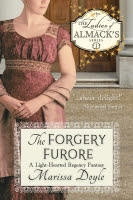Over the holidays, I had the privilege of visiting a local museum. I know, you’re shocked. I mean, I never spend my free time in lovely, lovely research. J
By local, I mean just down the road from me. The Prairie House Museum, operated by the Spanaway Historical Society, tells the story of the area just south of Tacoma, Washington, on the way to Mt. Rainier. Though tall firs surround the house now, when it was built the area was entirely prairie, hence the name.
The house, which looks similar to the one in the picture, was originally built in the 1890s and has been lovingly restored by the society. It was named a historical landmark in 1989. The displays focus on different eras of history, from the early farming days to World War I and World War II. Clustered around the Victorian farmhouse are a smithy, milk and wash house, a large covered shed holding early farming machinery, and a two-story barn.
I have only lived in the area for 2 years, so much of the history the well-informed docent shared with me on my guided tour was new to me. I knew about the large lake at the edge of the community—I live about 3 miles from its shores. But what I didn’t know was that the area was quite the resort at the turn of the century.
It had its own railway that brought visitors in from downtown Tacoma twice a day, led by Old Betsy, the steam engine. There was a streetcar as well, all coming down Park Avenue. (Regina Scott connection—I attended Park Avenue Elementary School in Tacoma.) The lake shore featured the largest open-air dance pavilion in the state, shooting galleries, a bathhouse, a boathouse, hotels, and numerous summer cottages of the rich and famous.
The community that grew up around the resort included grocery stores, taverns, a cooper, a slaughter house, a creamery, a livery stable, and a sawmill and furniture factory. The area, which the developers hoped would be called Lake Park instead of the native name that had been Anglicized to Spanaway, even had its own newspaper, The Sentinel.
In 1922, a huge fire swept the area, taking with it many of the buildings in the business district. Spanaway never fully recovered. When I was a youngster, it was a wild place, known only for the large city park on its shores. The park still stands, but businesses once more clog it on the north and east, with a residential area to the south and Joint Base Lewis-McChord near the west. The homes that once belonged to the rich and famous for the summer now house more modest families year round.
But walking through the museum, you can hear the whispers of splashes from swimmers, the faint strains from the band at the pavilion. And you can catch a glimpse into a lovely past others might never know existed.
You can learn more about the Prairie House Museum at its website.








No comments:
Post a Comment